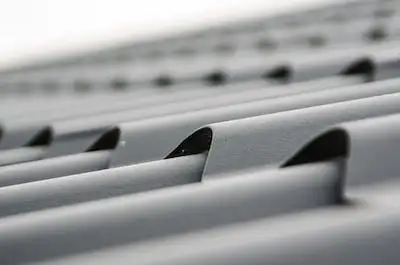The Yearly Standard:
Most experts recommend an annual roof inspection as a baseline. This yearly checkup allows you to assess the overall condition of your roof, identifying minor wear and tear before it leads to bigger problems. Think of it as a preventive health check for your home's crown.
Seasonal Shifts:
Scheduling inspections in spring and fall can be particularly beneficial. Spring brings the thawing of winter ice and snow, which can expose hidden damage. Fall, on the other hand, prepares your roof for the harsher winter months ahead. Addressing any weaknesses before the cold and wet arrive can prevent leaks and costly repairs later.
Beyond the Calendar:
While annual inspections are crucial, several factors can necessitate more frequent checkups:
Roof Age: Newer roofs might not require yearly inspections, but as they age, the frequency should increase. Consult your roofing specialist for recommended inspection intervals based on your roof's material and age.
Weather Woes: Mother Nature can be rough on your roof. Heavy snowfall, hailstorms, or strong winds can cause damage that needs immediate attention. Inspect your roof after any major weather event, especially if you notice missing shingles, dents, or other visible signs of wear.
Visible Issues: Don't wait for a scheduled inspection if you notice any red flags like missing shingles, sagging areas, or water stains on your ceiling. These indicate potential leaks or structural problems that require prompt professional attention.
Nearby Trees: Trees overhanging your roof can shed leaves and debris, clogging gutters and causing moisture buildup. If you have many trees around your house, consider more frequent inspections, especially in fall when leaves are falling.
DIY or Pro?
While some homeowners might be tempted to climb up and inspect their roofs themselves, it's generally not recommended. Roofs can be slippery and dangerous, and untrained eyes might miss crucial signs of damage. Hiring a qualified roofing professional ensures a thorough inspection that identifies even minor issues and provides expert recommendations for repair or maintenance.
What to Expect During an Inspection:
A professional roof inspection typically involves:
Visual examination: The inspector will assess the overall condition of your roof, looking for missing or damaged shingles, cracks, leaks, and signs of wear and tear.
Checking gutters and downspouts: Clogged gutters can lead to water damage, so the inspector will ensure proper drainage and clear any debris.
Flashing inspection: Flashing around chimneys, vents, and other roof penetrations are crucial for preventing leaks, and the inspector will check for any damage or improper installation.
Documentation and recommendations: The inspector will provide a detailed report of their findings, including any recommendations for repairs or maintenance.
The Cost of Proactive Care:
Regular roof inspections may seem like an added expense, but they pale in comparison to the cost of major repairs akibat neglecting small issues. Early detection and intervention can save you thousands of dollars in the long run and prevent significant water damage to your home's interior.
Remember: Your roof is a vital investment, and proper care ensures its longevity and protects your home. By incorporating regular inspections into your home maintenance routine, you'll give your roof the attention it deserves and enjoy peace of mind knowing your most valuable asset is well-protected.
Beyond the Basics:
In addition to the general guidelines, consider these factors for a more personalized approach to roof inspection frequency:
Roof Material: Different materials have varying lifespans and require different levels of maintenance. Asphalt shingles, for example, might need inspections every two to three years, while metal roofs might only require them every five to seven years.
Local Climate: Harsh climates with extreme weather conditions like heavy snowfall or frequent hailstorms necessitate more frequent inspections.
Warranty Coverage: Some roof warranties stipulate mandatory inspections to maintain coverage. Consult your warranty document for specific requirements.
By taking all these factors into account, you can determine the ideal inspection schedule for your specific roof and ensure its optimal health and performance.
Investing in regular roof inspections is an investment in your home's well-being and your own peace of mind. Remember, a little proactive care can go a long way in protecting your most valuable asset from the elements and ensuring a safe and comfortable haven for years to come.

